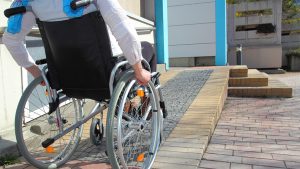Why call them school portables when they usually sit there for 20 years until the school board condemns them, asks Shawn Hickey, Vice-President of Construction with Ottawa’s SiteCast Construction.
OTTAWA
Why call them school portables when they usually sit there for 20 years until the school board condemns them, asks Shawn Hickey, Vice-President of Construction with Ottawa’s SiteCast Construction.
Once exempt from strict building codes, portables are now recognized as impediments to educational accessibility.
“The only reason they’re up on blocks is so that you don’t have to raise them again when they’re moved — but they rarely move. You can try to make them barrier-free by adding a ramp, but does that ramp work for you in the freezing rain or during a snowstorm?”
SiteCast’s barrier-free alternative is a school building assembled at ground level using cast tilt-up structural concrete panels. An Ottawa school board member contacted the company eight years ago about replacing a school portable after seeing a test project assembled in Africa. The company has built more than 100 units in Ontario since then.
The buildings sit on traditional foundations when used as school additions, but are built on four-inch insulated floor slabs in stand-alone applications. The insulated, load-bearing panels are cast, then bolted together and sealed at the corners. Construction costs begin at about $70 per square foot.
Construction requires a crew of five workers and a local crane operator, and takes about a day to complete. Larger, eight-classroom structures called Port-A-Paks require approximately eight weeks to install. SiteCast finishes the interior — including chalk boards, washrooms and air conditioners — for Ottawa-area projects, but hires local contractors to perform the interior work elsewhere.
SITECAST
Construction workers replace a raised portable at a St. Thomas, Ont. school with an accessible pre-cast concrete building.
“Without a ramp, two-thirds of the accessibility problems are solved,” says Hickey. “There are no impediments on the inside — no joints and transition strips where floor systems come together, and we can supply them with powered barrier-free doors.”
Washrooms are also fully accessible and can be designed with as much space as the local school board requests.
Hickey says that concrete also provides excellent sound insulation, while resisting mould and mildew — a problem that plagues some school buildings. The interior panels can be retrofitted to accommodate new openings or repositioned for building additions.
Though these structures aren’t referred to as portables, the SiteCast buildings happen to be just that.
“They can be disassembled and relocated in two to three weeks,” says Hickey, who would like to replace more of the estimated 14,000 portables in Ontario. “If we replaced them all, we’d use enough concrete to build seven CN Towers.”










Recent Comments
comments for this post are closed